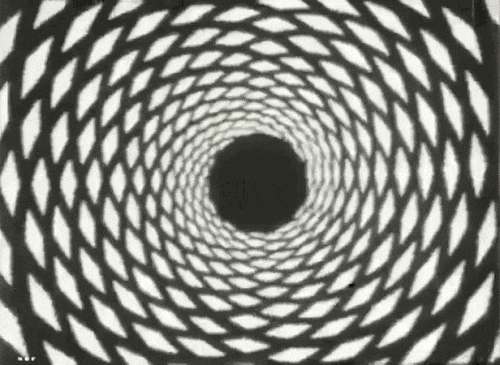
‘Jordan Belson died in September, 2011 at the age of 85. In his later years, Belson was an intensely private, almost hermetic, figure. The 30 films he made as an independent, artisanal filmmaker are suffused with mystery, navigating inner and outer spaces via slowly mounting flames of deliquescent light, shimmering starfields, and rainstorms of color.
‘The question of how he made those images was also a closely guarded secret. Throughout his life, Belson let slip few fragments of information regarding his filmmaking process. He was careful to distinguish his work from animation, for instance—even though his earliest films were made via traditional animation methods—insisting, “I don’t use liquids or models. I use mechanical and optical effects; and instead of using an animating table, I call my setup an optical bench.” The only extant description of that optical bench is in Gene Youngblood’s 1970 book Expanded Cinema. Belson’s primary means of image-making was a purposefully rudimentary, handmade apparatus, a cobbled-together array of a “plywood frame around an old X-ray stand with rotating tables, variable speed motors, and variable intensity lights.” New modes of vision required new techniques to depict them, and Belson continually sought to refine his methods in order to produce unique effects. Séance (1959), for example, provides one of the first cinematic examples of a flicker effect, predating the work of both Peter Kubelka and Tony Conrad. For Light (1973), he introduced cascades of flickering and undulating particles that had not appeared in previous films. One need only to see the pulsing galaxies of Allures (1961) (which may have, in fact, used animation techniques) or the celestial terraforms of Samadhi (1967) to acknowledge the yawning gap between the simplicity of Belson’s setup and the profound complexity of the imagery he achieved. …
‘Having studied painting at the California School of Fine Art (now San Francisco Art Institute) and Berkeley, Belson brought together a keen understanding of materials, color, and form to his moving abstractions. Like his painter-turned-filmmaker friend Harry Smith, Belson was spurred to start making films after taking in screenings of Oskar Fischinger, Norman McLaren, and Hans Richter at the Art in Cinema series at the San Francisco Museum of Modern Art in the 1940s. Belson also marshaled a number of systems of esoteric knowledge—Eastern religion, alchemy, Jungian psychology, and intoxication—to imbue those abstractions with meaning beyond the kinetic play of their surface beauty. While undeniably cosmic, Belson’s films are not without their representative qualities. Though he acknowledged the hallucinatory qualities of his 1960s films, Belson held fast to the idea that the flaming, spinning mandalas and spacescapes in his works were representations of an inner consciousness. He claimed, “I first have to see the images somewhere, within or without or somewhere. I mean, I don’t make them up.” At another juncture, Belson said that Samadhi “is intended to be a real documentary representation, as accurately as it was possible to make, of a real place and a real visual phenomenon that I perceived—just as I am looking at you right now.”
‘The otherworldly beauty of Belson’s private spectacle also caught the eye of Hollywood filmmakers looking to imbue their productions with the patina of the metaphysical. Stripped of their original contexts, however, Belson’s transcendental explorations transmuted into sci-fi effects fodder, even in such mildly enjoyable hokum as Robert Parrish’s Journey to the Far Side of the Sun (1969), and Donald Cammell’s Demon Seed (1977), in which Belson’s imagery is the seduction tool employed by lusty A.I. super computer Proteus, who, upon acquiring sentience, also develops the hots for Julie Christie. While those examples merely repurposed older Belson footage, Philip Kaufman hired the experimental filmmaker to create special effects for his adaptation of The Right Stuff (1983), which recounted the origins of the American space program. Belson shot over 20,000 feet of footage for The Right Stuff—enough for a feature film—of which roughly three minutes were shown in the finished work. Belson was tasked with creating images of pilot Chuck Yeager’s breaking of the sound barrier, the Earth, and starfields. He was also asked to recreate the mysterious shimmering “fireflies” that John Glenn reported seeing outside the cockpit of his Apollo spacecraft. (Not entirely coincidentally, Belson’s 1964 film Re-Entry had been inspired by astronaut Glenn’s post-orbit return to earth in February of 1962, and its soundtrack used snippets of Glenn’s radio communications.)
‘For The Right Stuff’s “fireflies” sequence, Kaufman intercut medium close-up shots of a bewildered Glenn (played by Ed Harris) surrounded by Belson’s light flecks with scenes of aborigines singing and dancing around a sparking fire. The camera follows the blaze’s embers as they lift into the night air. The resulting sequence creates the impression that the primitive ritual being enacted on terra firma is aiding Glenn’s journey in the heavens. Regardless of the fact that the film never mentions that “fireflies” were later determined by NASA to be light-reflecting ice particles outside of Glenn’s MA-6 capsule, the invocation of a primitive mysticism via a questionable portrayal of indigenous practices is far removed from Belson’s subjective investigations of human consciousness and perception in his own work. A director with a steadier aesthetic hand, Terrence Malick, studied Belson’s films while working on this year’s Tree of Life, and even approached Belson about creating new work for the project. …
‘Belson would go on to embrace the creative capacities of video editing in Mysterious Journey (1997) and his last work, the aptly-titled Epilogue (2005)—the latter piece commissioned for the Hirshhorn Museum’s landmark “Visual Music” exhibition that same year. In October, a never-before-seen work of Belson’s debuted at the memorial screening. Perhaps this rediscovery marks the beginning of Belson’s own eternal return, his re-entry into a mediascape that bears his aesthetic influence more than his physical imprint.’ — Gregory Zinman, The Brooklyn Rail
____
Stills
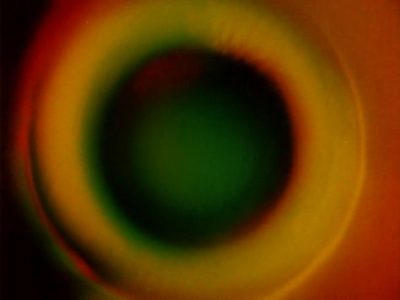

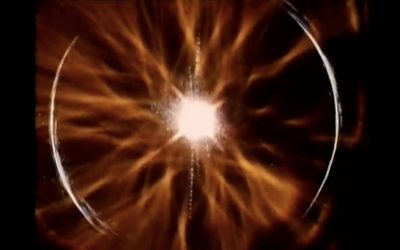
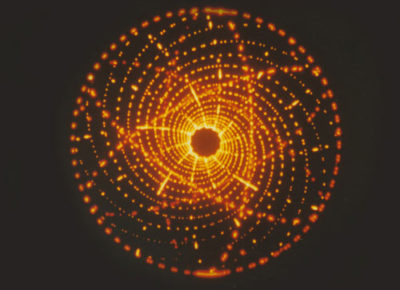
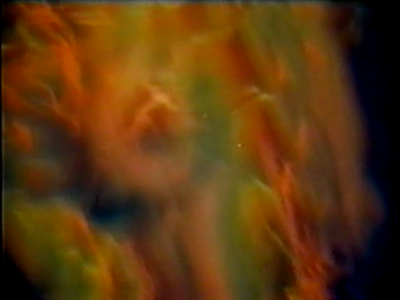

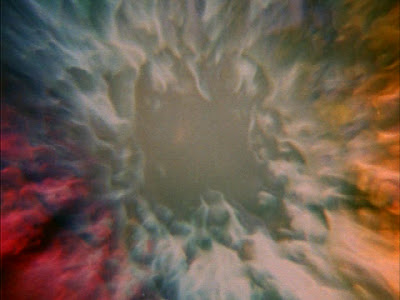


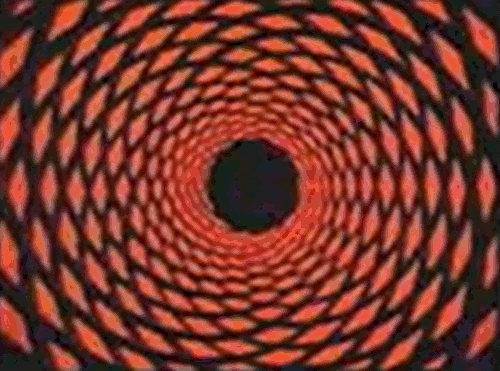

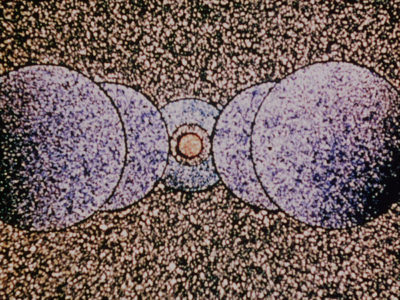
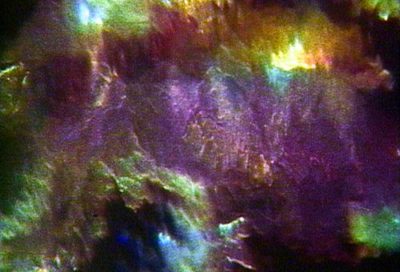
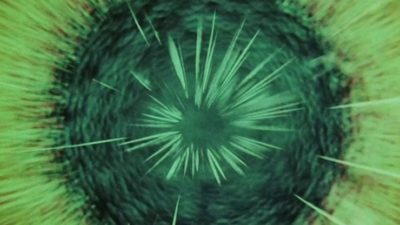




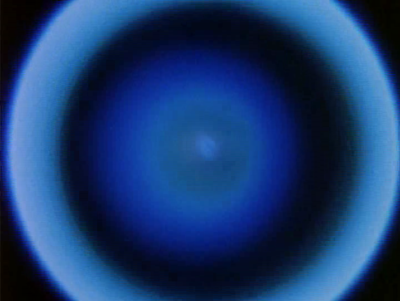
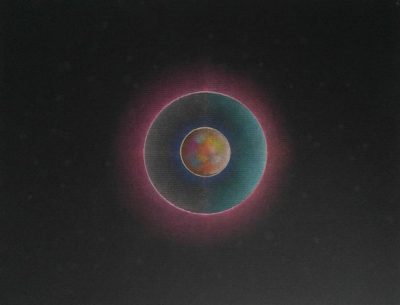
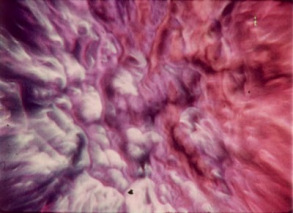


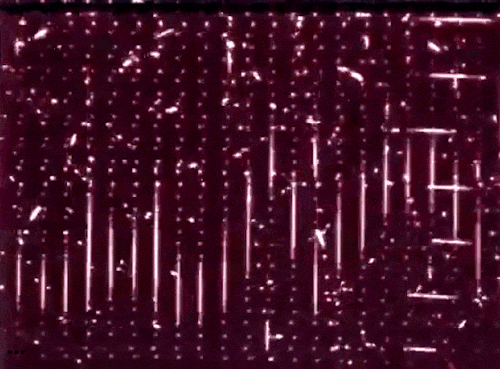


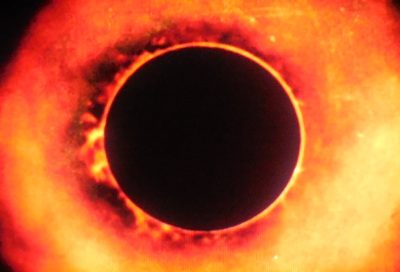



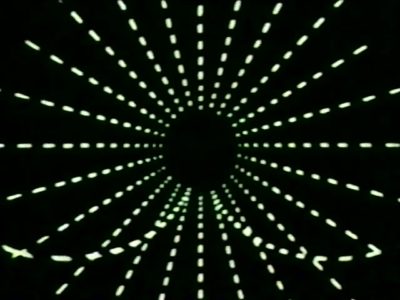

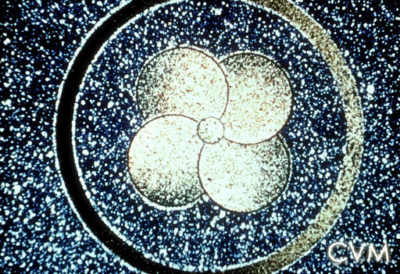
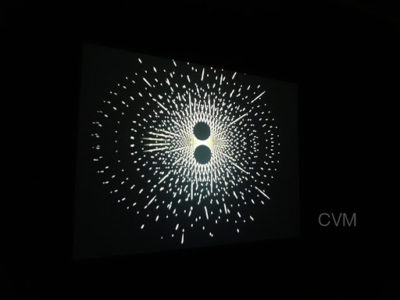
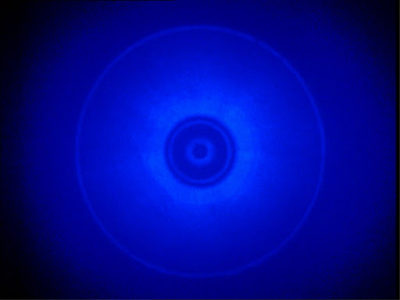

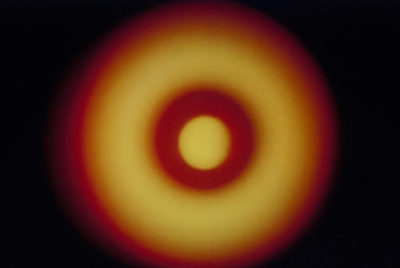
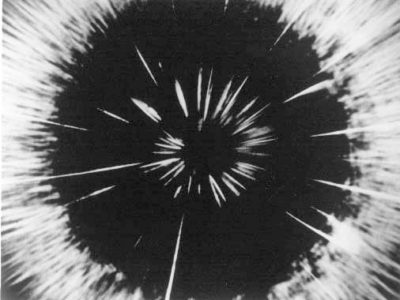

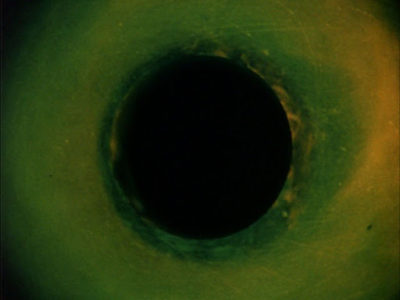

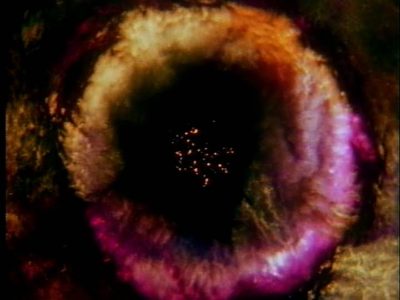

___
Further
Jordan Belson, 1926 – 2011
Jordan Belson @ IMDb
Jordan Belson @ Light Cone
Notes on Jordan Belson – Raymond Foye
RE-ENTRY: Thoughts on Jordan Belson: 1926–2011
Le cinéma cosmique de Jordan Belson
DVD: ‘JORDAN BELSON: 5 ESSENTIAL FILMS’
THE UNKNOWN ART OF JORDAN BELSON
Jordan Belson @ Matthew Marks Gallery
Jordan Belson: Sentience in Celluloid
Review: Phenomena by Jordan Belson; Samadhi by Jordan Belson
Jordan Belson @ letterboxd
SAMADHI by Jordan Belson
The Secret Paintings of a Hermetic Filmmaker
Making Films for the Inner Eye: Jordan Belson, James Whitney, Paul Sharits
The Search for Lost Transcendence: Cosmic mysticism in Jordan Belson’s films and painting
JORDAN BELSON: VISUALIZING INNER AND OUTER SPACE
___
Extras
STiCKY DoT MANDALA ViSioNS [FoR JoRDAN BELSoN]

Jordan Belson Paintings 1950–1965
Tribute to Jordan Belson
____
Quotes
from Raymond Foye/The Brooklyn Rail

Film was just a few years old when I was born so it seemed the most modern revolutionary medium I could use. My films are always arbitrary mindstuff: nothing domestic.
In my work I am proceeding from the belief that anything can be animated. I’m interested in what underlies reality.
There are certain givens in my symbols that are based on practice, or just based on things as they are.
Non-Objectivism: To construct real events in an unreal world. As opposed to most concepts of abstraction where they are trying to get away from the physical world, in most cases.
Many of Kandinsky’s images are like visual letters, or a telegram.
Non-objective art wasn’t non-objective, people just didn’t yet know what the object was.
Each atom contains a simplified blueprint of what’s taking place in the cosmos. Protons and electrons moving around the nucleus, like planets around the sun. In this image green below is earth and sky above is blue, but that is not always the case. These relations and terms are relative in the work.
The tangibles and intangibles are mixed in the metaphysic. The image as a container of wisdom and knowledge.
I’ve tried to develop a sure sense of proportion so that if it’s not right, I can detect it. Granted I may not know what to do about it right away….
Intuition is the basis of my aesthetic judgment. The more you allow intuition to speak to you the closer you are to the truth, and the origins of the universe. I feel I’ve given up a lot of ways of thinking about certain things in order to be closer to intuition.
I try with my work to establish a sense of the monument: a spiritual location, like the great temples, the Acropolis. Symmetrical, beautiful lighting, the most advanced architectural thinking operates on a much higher plane than most modern art does.
There are monsters in my work. I used to despair at this. But then I realized I can’t eliminate them. They’re just part of the trip. The key is just don’t let them think they’re in control. The bardo plane contains all these awful gods and demons. They’re just projections.
______________
10 of Jordan Belson’s 30 films
______________
Bop-Scotch (1952)
‘In 1952, Belson animated a little masterpiece Bop Scotch, which applied the three-frame exposure of his other animation to objects found on the street. Moving around a manhole cover makes it seem to turn and following the swirling lines in a decorative paving seems to make them sway. Daisies dance and a rock seems to hop about from hollow to hollow in a patterned surface. The effect is enchanting and it became a very popular film.’ — Film Affinity
Trailer
____________
Mandala (1953)
‘Mandala came out only one year after Bop-Scotch but already showed a marked progression for Belson, who began honing in on what would become his own unique visual perspective. The film is more along the lines of what one traditionally expects of Belson’s work, namely, visually-centered compositions with circular objects at the heart of the screen growing, moving, and dissipating into a cinematic ether. We see geometric patterns of circles move around to the sound of a gamelan, the flow of the animation undulates between smooth and staccato movement. At one point, it appears as if the sun and the moon are swaying in orbit from one another amidst a backdrop of swirling grain.
‘Although Belson’s works operate as stand-alone films, that is to say visual-temporal stimulation crafted to approach a meditative state devoid of outside interference, one might liken his approach to some of the writing of Jung, who describes, in Archetypes of the Collective Unconscious, that “the severe pattern imposed by a circular image of this kind compensates the disorder of the psychic state– namely through a the construction of a central point to which everything is related, or by a concentric arrangement of the disordered multiplicity and of contradictory and irreconcilable elements. This is evidently an attempt at self-healing on the part of Nature, which does not spring from conscious reflection but from an instinctive impulse.”
‘Belson employs the seamless, constant movement allowed by the filmic medium to distill the audience’s interaction with his art work down to this “instinctive impulse”. As a concentrated temporal passage, Mandala projects a series of circle-based arrangements not to his own ends but as a way of conveying this self-healing to the audience. As we perceive the film, “we are driven to the conclusion that there must be a transconscious disposition in every individual which is able to produce the same or very similar symbols at all times and in all places.” Jung described this as a “collective unconscious” and Belson achieves a similar experience for his audiences through the non-representational images projected within the sealed space of the theater.’ — arkheia
Excerpt
Excerpt
__________
Raga (1958)
‘An early animated film by Jordan Belson.’

___________
Allures (1961)
‘I think of Allures as a combination of molecular structures and astronomical events mixed with subconscious and subjective phenomena – all happening simultaneously. the beginning is almost purely sensual, the end perhaps totally nonmaterial. It seems to move from matter to spirit in some way.’ — Jordan Belson

____________
Re-Entry (1964)
‘Belson uses colorful abstract gaseous images of light against a black background as a visual recreation of Bardo or the three states of being at the moment of death as defined by the Tibetan Book of the Dead. “Belson aligns the three stages of Bardo with the three stages of space flight: leaving the earth’s atmosphere (death), moving through deep space (karmic illusions), and reentry into the earth’s atmosphere (rebirth).’ — WorldCat
____________
Samadhi (1967)
‘Is it possible to create a film that both induces and reproduces a transcendental experience? This thought fascinated Belson and other avant-garde filmmakers of his time, such as James Whitney and Stan Brakhage. The melting pot of counterculture, psychedelics and Eastern philosophy of the late Sixties set the scene in which these filmmakers would create their films. Belson recalls the revolutionary transformation and impact of psychedelics on the arts at the time, having himself experimented with LSD and mescaline: “It somehow set the stage for insights…The new art and other forms of expression reveal the influence of mind expansion”.’ — Sophie Pinchetti
__________
World (1970)
‘A combination of molecular structures and astronomical events mixed with subconscious and subjective phenomena—all happening simultaneously. The beginning is almost purely sensual, the end perhaps totally nonmaterial. It seems to move from matter to spirit in some way.’ — Jordan Belson
Excerpt
___________
Chakra (1972)
‘In Chakra, I was able to transfer the traditional order of the chakras into a film, starting with the first (lower) chakra and working up to the seventh (top) chakra…’ — Jordan Belson
Trailer
____________
Music of the Spheres (1977)
‘Belson’s works often provoke responses that rely heavily on abstract comparisons to the cosmos and outer space but this is perhaps one of his most celestial films. The opening titles even circle around a planetary surface, suggesting a kind of gravitational pull toward the center of the frame which winks at Belson’s predilection for centered compositions. While the fascination with cosmic imagery is ever-present, the audience’s geographic orientation is constantly thrown into question through repeated zooms both in and out of various objects. The soundtrack, offering a lush arrangement of marimbas, bells, and arpeggiated synths, plays off of the wondrous images Belson concocts on the screen. Shimmering colors evoking the Aurora Borealis, faintly-perceivable molten lava, splashing embers, and rushing waterfalls. Finally Belson zooms out from the serene texture of light reflecting on the surface of a lake to reveal our location within a tropical paradise. An entire universe contained within the sparkling glimmers of luminescence – a perfect metaphor for Belson’s filmography.’ — arkheia
Excerpt
______________
Fountain of Dreams (1984)
‘Belson’s imagery is ever enchanting, celestial colors dissolving into one another in a luminous and abstract dance. The gentle accompaniment of Liszt’s music blends with the swirling lights into a lovely cinematic synesthesia.’ — letterboxd
*
p.s. Hey. ** Ferdinand, Hey. Ah, you’re heading up here. Is Belgium locked down too? I don’t even know. The lockdown here is annoying, but, frankly, other than art galleries being closed, which majorly sucks, and the obnoxious govt. permission form one must fill in and print out and put somewhere on one’s person before walking out one’s door, it doesn’t feel hugely different than before. ‘Discontents’! I’m very proud of that book. I think it lays out and represents the queer punk era very well in its own way. I really want to get it reprinted somehow. I need to look into that. Big up, sir. ** David Ehrenstein, I think I can guess who you would refer to as God. Let me check. *click* Yes, I was right! ** Jack Skelley, Trade of all Jacks. (1) Thanks for the ©. It’s pretty. (2) Agreed. (2 again) Exactamundo. (3) No one does rhetorical jives better. (4) Ditto. (5) I’ll pay especially close attention to any mysterious tastes that might make appearances in my mouth. (5 1/2) Yes, I do think there was a huge drop post-Peter Green, although I do really like the first post-Green album ‘Kiln House’ a lot. Then the dreary Bob Welch era, although some of Danny Kirwin’s songs during the period are really good. I love Danny Kirwin. He was my big rock star crush when I was young. Then I think the remade FM as Nicks/Buckingham showcase era is mostly solid but utterly unremarkable. (6) No, it’s your playground. I’m just playing. ** Dominick, D!!!! Yes, we decided that ‘Jerk’ should really be preserved for future generations, ha ha, or whatever, since it’s been our most successful piece, and one of our best ones for sure. Oh, Billie Eilish’s performance wasn’t so exciting in and of itself. She just wandered around singing and stood on the hood of a car prop. I just think she and her songs are interesting and that something is going on in them. I feel like she could evolve into an even more interesting artist. That’s it, I guess. I don’t know who Bimini is, but I trust you that that was unforgivable. Love using his time machine option on Jackie Beat who used to be the meanest, scariest, most exciting trans/drag performer in Los Angeles fifteen or so years ago before she lost weight and remade herself into a merely okay, toned down, audience-friendly act, G. ** T, Hi, T. Thanks a lot for thanking them. And thanks re: our lockdown thing. Yeah, this has to be the last one. Trudging along. I hope you’re sprinting through your world. Take care. ** Steve Erickson, Hi. You must have had very, very low expectations about the Grammys. Yeah, the ‘WAP’ bit towered far above everything around it. Interesting/weird that rock was so completely sidelined apart from the borderline nap-inducing Haim. Well, there was that ‘Snuff/Gore (in quotes)’ post here a few days ago. That doesn’t count as ‘torture porn’? If not, are you offering to make such a post? I would be more than interested if you or whoever wanted to, of course. ** Golnoosh, Hi, G. Thank you, thank you so much again! I’m glad you finally got to see the comments. I didn’t know that invisibility problem is persisting. Ugh. Aw, thank you so much for the kind words and the humbling comparison, my friend. Have the bonnest day! ** Scott mcclanahan, Hi, Scott! Thank you, and it’s so great to see you! My pal Zac and I were talking about you exorbitantly the other day and wondering when you might publish a new book. Any hints? Take care, great sir, and much respect to you! ** Jeff J, Hi. Yes, I ended up going for the final day of the ‘Jerk’ shooting. I think, ultimately, it worked out okay. Gisele came around. There’s one key puppet show scene that’s shot in a problematic way, but mostly it looks pretty good. We’ll see when we start the editing next week. And it was melancholy to see the very last ‘Jerk’ performance. It’s been alive and touring for more than ten years. Crazy. A little novel progress sounds like plenty under the circumstances, so … great! I’ve only read a little Bruce Chatwin, but I liked what I read. Do you think I should read more of him? ** Okay. Today the blog focuses on the very beautiful and singular films of Jordan Belson, whose work you may or may not know, but, if not, now you can, and knowing his stuff is highly recommended. See you tomorrow.




 Now available in North America
Now available in North America 
Discontents – then I’m even more excited. As we speak Belgium is cancelling their relaxation plans for outdoor regulations, and changing those plans for stricter rules and also even lockdown becauce of the numbers. In Flemish Brabant where we reside when in Belgium the numbers are lower than Antwerp, Ghent, Brussels but still nervous regardless but its essential trip. The owner who we renting here in S.A informed me last night he wants to show off our apartment for possible buyers while we away so that means leaving the place behind spotless and semi anonymous.
Dennis, Hmm, so it sounds like this lockdown isn’t THAT bad. Let’s hope it gets lifted sooner than expected. I hope that’s a possibility.
Yeah, I really like my friend’s son. He’s a cute little guy, very smart, and very talented. He can be a real diva at times, according to his mom, hahaha. He’s really into theater and plays ice hockey too. He loves the theater more. I didn’t get to play him in anything because it was Friday night and it turns out Friday nights are his Fortnite nights, where he just settles in front of the TV and plays it for hours to make up for the week. Oh, well.
Still had a good time, though it got really funny…and scary for my friend. I relented after dinner (and taking my evening meds) and had about a quarter glass of wine. I guess it interacted badly with my meds because half an hour later I could barely function. Slurred speech, extremely tired, unsteady on my feet. It passed after an hour or so, but at one point my friend thought I was stroking out and was about to call 911. Otherwise, a really fun time, hahaha.
JB is a new name to me and I’m very happy to make his acquaintance. I’m always keen on any kind of op-art seeming stuff so will come back to these films once I’m out of the hospital’s NHS WiFi clutches,
I got some really good news today because guess what, I am now free of the boot! Feeling like a completely new person. This will make getting about so much easier and I am very happy about it 😊
Jordan Belson is where the climax of “2001: A Space Odyssey” comes from
Yes Dennis, I’m an orthodox Sonhemian Especially in light of the latest massacre 10 Dead including a cop.
It’s Lucille Leseur’s Birthday
In regards to Billie Eilish, I will admit that I do kind of like her new single, which has been getting a lot of radio play as of recent…
Hi!!
This is amazing news about “Jerk”!
I asked you about Billie Eilish because when her album exploded and she got this ridiculously popular, I listened to that album, more than once, and couldn’t get the hype at all. But then I totally randomly ran into some footage about one of her live performances, and yes, there was just something about her that was interesting and intense, maybe even charismatic. It really surprised me.
And yes! Yes! I met my deadline, and I’m free from the psycho thesis! In the future, I wouldn’t mind similar texts with maybe a bit more… generous deadlines, haha. But seriously, I feel pretty amazing now.
I know embarrassingly little about Jackie Beat, basically just her name, and your love just nudged me to explore her work more in-depth. Especially her older work, then. Thank you! Love creating an almost unbearably romantic and corny but absolutely divine Bûche de Noël shaped like two mermen making love and delivering it right to your door, not giving a single fuck that it’s March, Od.
I’m not enthusiastic enough about the subgenre to curate a Day, but it feels like someone should. The backlash against it seems to have led to the current dominance of “elevated horror,” but I sense a backlash against that leading to a new current in horror cinema very soon. There’s a great deal of academic writing about “torture porn,” most of which is more positive than the initial response from everyday film critics as the movies came out.
I wrote about Ken Loach’s BLACK JACK for Screen Slate: https://www.screenslate.com/articles/black-jack?mc_cid=e3106c9374&mc_eid=44d4e196d3 and reviewed the new serpentwithfeetalbum for Gay City News: https://www.gaycitynews.com/serpentwithfeets-wholesome-new-album-brings-positive-vibes/
Have you heard Meemo Comma’s new album? The concept behind it, bringing together non-binary gender, the Kabbalah and Jewish prayer and anime influences, is intriguing (although it also had the potential to be an obnoxious hipster mess), but they have a great feel for the way that Jewish liturgical music’s tendency towards minor key drones can work with electronic music.
Hey D,
Twin A of the Meijer set here. Guess what I read today?
One of the perks of being a professor is being able to ask publishers for access to virtually any book in existence, even ones that have yet to be published, for the purposes of selecting readings for classes. This perk allowed me the Sour Cream Taco Supreme honor of reading
….
….
***”I Wished”***
–!!!!!!!!–
Lots to share but for now I just want to say how amazed I am that you would be willing to put yourself out there like that, whoa. Ultra whoa! But what a great call on your part. I want to show it to every biological male I know and be like, this is the new bar for vulnerability, this is what I expect from all you bitches from now on, no exceptions and no excuses.
While the book made me incredibly sad, it also gave me joy because it’s all about, like, sharing & caring man. It’s call and response. That’s the best life has to offer. Feeling the power of your love for George, that it’s possible for people to feel that kind of love, even if the experience of that love is really painful/unresolvable…it’s the only superpower humans have, it’s the only thing that redeems us as a species. It’s also an intensely moral act, to allow people the chance to bear witness because you think there is even a possibility that people will care and that it will make a difference–even to George himself. I think that’s some serious next level shit.
“To be named is to be realized”–in naming George as someone to be loved, as loved by you, you make him potentially lovable to others. It’s not so much thinking that I now know who he is–I don’t have any idea what he was really like–but it’s similar to loving a child when they’re born–you just make this commitment that becomes the necessary precondition for any kind of love to exist at all, such that you automatically interpret who they are as inherently lovable, even if they turn out to be difficult people. On a much lesser level, it’s like this blog and you saying, ‘hey, I like this artist, what do you think?’ and by introducing them as worthwhile, it primes me/us to see that artist in the same way even if the artist is difficult or not interesting to me at first glance, whereas in another context I may miss the potential either because they are given a different “name” by someone who dislikes them or because I never get a chance to come across them on my own.
Anyway, my new class is about death and mourning (surprise!) which is why I thought the book would be a great choice. I’d like to interview/chat with you via zoom about the book/your work as a whole . No rush since this the class starts in the fall so if there’s a time you’ll know you won’t be busy, let me know. This class comes with a stipend so I’ll be able to pay for you time, hooray!
And while I want to honor the purpose of this blog and mention today’s artist,Jordan Belson, “I wished” kicked my emotional and intellectual ass today so he will have to wait until tomorrow for my undivided attention. Today my heart belongs to George.
Mega high fives/hugs/epic guitar solo tributes,
Danielle
Hi Dennis, Thank you for writing about Jordan Belson and for linking his films. They are beautiful and psychedelic.
Also thank you for showcasing Golnoosh Nour and Forough Farrokhzad. I forwarded them to a close friend that teaches women’s literature classes, so hopefully she will find them useful?
I am well, still working on editing poems and celebrating my mother’s birthday she is 80 and baking her a cake and making dinner for her. My local library bought a copy of the Tim Dlugos poetry anthology when I told them to buy it, what was he like as a person? He seems so full of energy and minimalist in his poems which explode with imagery.
I own the high risk anthology of Dlugos’ poems, as well as the Discontents anthology you edited.
Are you working on your book ‘I wished’, or writing any poems?
I commented with this before but like Golnoosh my comments sometimes do not show up on your blog?
To Golnoosh-Thank you for writing about Forough Farrokhzad’s life and her poetry. I emailed your writing to a close friend that teaches women’s literature. I am not sure if she will use the poems in her classes; but if she uses any part of your writing in lectures or discussions, she will cite it with you as the writer.
Since you are from Iran do you ever drink or make chai? If so which spices do you use? I have made the South Asian version of Irani chai, as well as all types of South Asian variations of chai but I just tend to prefer and drink a simple cardamom chai, or wagh-bakri masala chai my Tamil friend gives me.
I’m embarrassed that I’m unfamiliar with Belson’s lovely work. Will definitely spend some time exploring soon.
Sorry to hear about the closing of your art galleries. I booked an appointment to see the Christian Marclay show at the Fraenkel in a couple days. I guess I should try to get to the SF MOMA before the dreaded surge kicks in.
I never caught Jerk live; would of course love to see the film.
Bill
As a long time lurker on here I feel like I should be more vocal on the message board! These last two posts (Forough Farrokhzad & Jordan Belson) are so stunning and new discovers for me. It’s amazing how much beauty gets released and re-released into the world through this blog. It’s so cool to have the momentum of new aesthetics and like minded sensibilities to give these stagnant days some movement.
Also I once saw ‘Jerk’ here in NYC and it was mind blowing. The sound of the performers saliva hitting floor during the simulated puppet sex scene will forever echo in my mind. So happy that you’re committing it to film.
And for anyone who is interested my episode with Chris Zeischegg about SAUVAGE + BASIE-MOI is up. Chris really surprised me with his candor. I didn’t think these movies would open so much unexpected and meaningful dialogue around sex work, porn, feminism, nihilism etc…
Thank you Ferdinand for the Baise-moi post. I used your text for the opening monologue!
Dennis, when do you think there will be galleys of I Wished ready?